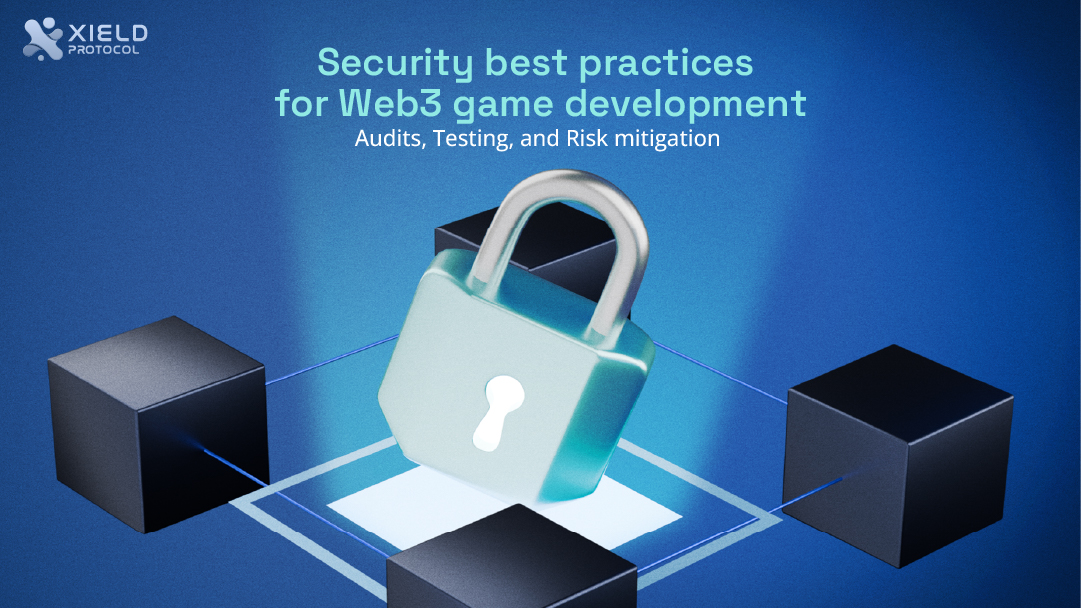The gambling industry is experiencing a seismic change. These games are decentralized, which is a novel idea that uses blockchain technology to empower players and redefine ownership in the virtual world. However, its decentralized nature presents distinct security difficulties. Web3 games, like decentralized finance (DeFi) apps, are vulnerable to security flaws such as smart contract exploitation, phishing attempts, and rug pulls. Thus, securing the security of Web3 games is critical for developers, players, and the ecosystem as a whole.
According to a report, $14 billion in cryptocurrency was stolen in 2021 alone, marking a 79% increase from 2020. A significant portion of this came from DeFi exploits, including Web3 games.
This article goes into the complexities of Web3 game development, providing you with the information you need to carve your path in this rapidly expanding field.
Understanding the Web 3 Gaming Model
At its foundation, Web3 gaming relies on decentralization. Unlike traditional games, which give players limited control over in-game assets, Web3 titles use blockchain technology to provide a trustless environment. Here is a breakdown of the main elements:
Blockchain Technology: Imagine a transparent and secure digital ledger that records every transaction and ownership change. This is the power of blockchain, which supports Web3 games. Ethereum, Solana, and Polygon are among the most popular blockchains for gaming.
Smart Contracts: These self-executing contracts control the game’s logic and economy. They automate operations using preset criteria, assuring fairness and transparency. A smart contract, for example, may control in-game item trade or handle reward distribution.
Digital Ownership: In Web3 games, players own their in-game assets, which are represented as NFTs (Non-Fungible Tokens). These unique digital tokens provide provable ownership of objects like weapons, characters, and virtual land. Users may freely exchange these NFTs on secondary marketplaces, which promotes a player-driven economy.
The Web 3 Game Development Tools
Creating a Web3 game necessitates a unique collection of tools and technology. Here’s a look at the important components:
Blockchain Development Tools: Popular smart contract languages include Solidity (for Ethereum) and Vyper (for Ethereum). Understanding these languages is critical to establishing the game’s fundamental mechanics.
Web3 Libraries: Libraries like Web3.js (Ethereum) and Ethers.js (Ethereum) make blockchain interaction in your game easier, allowing for smooth integration of functionality such as wallet connectivity and NFT management.
Front-End Development: Experience with frameworks such as React or Unity, as well as JavaScript, is required for user interfaces and player interactions.
Blockchain Networks: Selecting the right blockchain network for your game is critical. Consider transaction costs, scalability, and the development ecosystem.
Why is Security Important in Web3 Game Development?
Web3 games’ decentralized nature makes them both exciting and risky. Without centralized control, unscrupulous actors might exploit smart contract weaknesses, steal assets, or manipulate gaming to their benefit. Here’s why security in Web3 game creation is crucial:
Asset Protection: In Web3 games, assets have real-world worth. Security issues can lead to the theft of NFTs and cryptocurrencies, reducing players’ faith in the game and its ecosystem.
Smart Contract Vulnerabilities: Once deployed, smart contracts are immutable. Any vulnerability in their coding can lead to exploitation. Smart contract exploits have resulted in over $3 billion in damages from DeFi projects as of 2022.
Regulatory Compliance: Ensuring sufficient security measures will help Web3 games comply with increasingly strict rules governing blockchain and cryptocurrency use.
User Trust: A single security breach may damage user trust, making it difficult to rebuild, especially in a decentralized setting where governance and supervision are more open.
With that in mind, let’s look at some of the finest security procedures for web3 game creation.
Best Security Practices for Web3 Game Development
Smart Contract Audits
Conduct a comprehensive smart contract audit to ensure game security. Audits entail having third-party specialists examine your code for vulnerabilities, logic mistakes, and inefficiencies that might lead to an attack.
Security auditors examine smart contracts line by line, checking them against multiple attack vectors. They also look for flaws like reentrancy attacks, in which an attacker withdraws cash from an agreement before the balance is updated.
A smart contract audit can help prevent disastrous exploits that could result in the loss of player assets. More than $600 million was lost in 2021 alone as a result of DeFi exploits, many of which might have been averted with proper auditing.
Penetration Testing
Penetration testing (pen testing) simulates real-world assaults to detect security problems in your game’s infrastructure. Security professionals or automated tools attempt to hack into your system by exploiting known flaws.
Pen testing can expose flaws in not just smart contracts, but also the general architecture, APIs, and server settings. Web3 games frequently need interaction with third-party services like wallets (e.g., MetaMask) and decentralized storage systems (e.g., IPFS). A weakness in any of these integrations might be used to impact the game adversely.
Automated Testing for Smart Contract
While penetration testing and audits need human skills, automated testing ensures that your code works as intended and fulfills security requirements. Automated testing frameworks like Hardhat, Truffle, and Foundry enable developers to execute specified scenarios that simulate actual gaming circumstances.
You may test for edge situations, transaction failures, and other unusual behavior. By implementing automated and manual security testing, developers can reduce potential vulnerabilities a lot.
Automated testing identifies problems early in the development process before they become severe difficulties. Because smart contracts are immutable, resolving errors after deployment may be complex and costly.
Multi-sig wallets for Treasury Management
A multi-signature (multi-sig) wallet requires several private keys to approve a transaction, adding an extra degree of protection.
Instead of a single individual controlling the game’s finances, each transfer of cash requires approval from various key holders (e.g., DevOps, and community members).
Multisig wallets lessen the likelihood of a single point of failure in decentralized networks. It also reduces the likelihood of an inside job or rogue developer fleeing with money.
Bug bounty programs
A bug bounty program incentivizes ethical hackers to discover vulnerabilities in your game in return for compensation. Platforms such as Immunefi and HackerOne provide bug rewards for blockchain technologies. Developers define the scope of potential vulnerabilities, while ethical hackers compete to identify them for a reward.
Bug bounties can be a low-cost approach to detect and resolve flaws before dangerous actors make use of them. Several large blockchain projects have successfully employed bug bounty programs to strengthen their security posture.
The Future of Web 3 Games and Security
The future of Web3 gaming seems exciting, but it is also laden with difficulties. As the space expands, so will the complexity of assaults. However, the emergence of tools for secure smart contract creation, decentralized identification systems, and blockchain-native security solutions will ease the situation. Developers who emphasize security from the start will be better equipped to create long-lasting, safe ecosystems that can expand with user demand.
Emerging trends
Zero-Knowledge Proofs (ZKPs): These cryptographic techniques provide increased privacy and security, allowing developers to build more secure in-game transactions without disclosing unneeded information.
Layer-2 Scaling: Layer-2 technologies such as Polygon or Arbitrum provide scalability and low transaction costs while maintaining security. As these technologies improve, web3 games will become more efficient and secure.
Closing Thoughts
Web3 game creation is an exciting area for creativity, but it also has substantial security dangers. To secure their ecosystems and participants, developers must implement rigorous security measures like smart contract audits, penetration testing, and bug reward programs. By considering security throughout the creation process, Web3 games may thrive in a decentralized environment, providing players with secure, engaging, and financially rewarding experiences.
Ensuring security is more than simply safeguarding assets; it is also about building trust, which is critical for the long-term success of any Web3 project.




